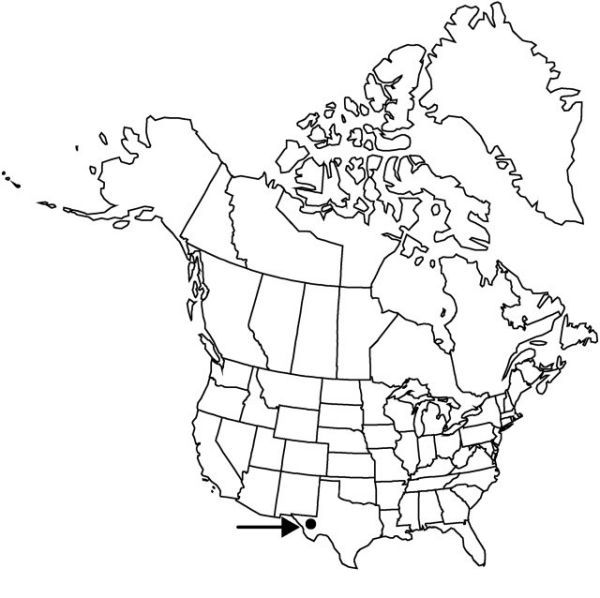Nolina arenicola
Madroño 19: 187. 1968.
Plants acaulescent, cespitose; rosettes from vertical, subterranean, branched caudices. Leaf blades wiry, carinate, flat or concavo-convex, 100–200 cm × 5–10 mm, not glaucous; margins remotely serrulate, with widely separated, noncartilaginous teeth, to entire; apex lacerate. Scape 1–3 dm. Inflorescences paniculate, rarely purple, 4–7 dm × 12–18 cm; main rachis and divisions thick, rigid, lateral branches spreading; bracts persistent, to 45 cm, apices curling; bractlets slightly erose, 1.5–5 mm, apex aristate. Flowers: tepals 2–2.8 mm; infertile stamens: filaments to 1 mm, anthers to 0.4 mm; fruiting pedicel erect, thick, articulate near base, noticeably dilated into perianth, proximal to joint 2–3.5 mm, distal to joint to 1.5 mm. Capsules firm-walled, inflated, 2.5–3.3 × 5–6.2 mm, broadly rounded distally. Seeds closely invested in capsules, bursting ovary walls, 3 × 4.3 mm diam.
Phenology: Flowering late spring.
Habitat: Open sandy soils or dunes in brushlands
Elevation: 1200 m
Distribution

Tex.
Discussion
Of conservation concern.
Nolina arenicola is endemic to the trans-Pecos region of Texas and is listed as threatened and endangered by the U.S. Fish and Wildlife Service. Nolina arenicola is similar to N. texana except that in N. arenicola the clumps are much more robust, with wider leaves, serrulate near the point of attachment, and are restricted to sandy areas.
Selected References
None.